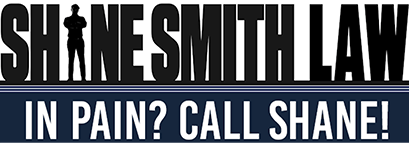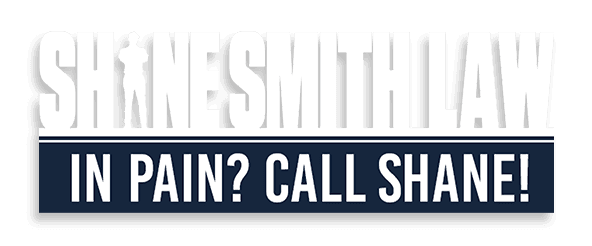Semi-truck accidents can cause devastating consequences, including severe injuries and significant property damage. Because of the complexity involved in these cases, determining liability is critical for pursuing justice and compensation. Here’s a guide to help you identify the responsible parties, understand relevant regulations, and take the necessary steps to protect your legal rights.
Identify All Potentially Responsible Parties
Liability in semi-truck accidents often involves more than just the truck driver. Several parties may share responsibility based on the specific circumstances of the accident:
- The Truck Driver: If the driver was speeding, distracted, fatigued, or under the influence, they may be directly responsible. Violations such as ignoring traffic laws or improper loading can also put the blame on them.
- The Trucking Company: Trucking companies may be liable for hiring unqualified drivers, failing to provide proper training, or encouraging unsafe practices to meet delivery deadlines.
- Maintenance Providers: Poor maintenance, such as worn brakes or faulty tires, can lead to accidents. The maintenance company could be at fault if negligence occurred during inspection or repairs.
- Cargo Loaders: Overloaded or improperly secured cargo can shift during transit, destabilizing the truck and causing an accident. The party responsible for loading the cargo may share liability.
- Manufacturers: The manufacturer could be held accountable if a defective truck part—like faulty brakes or tires—caused the crash.
Understanding who is responsible is the first step in pursuing the compensation you deserve.
Understand Federal and State Trucking Regulations
Semi-trucks and their drivers are subject to strict rules enforced by agencies like the Federal Motor Carrier Safety Administration (FMCSA). Violations of these regulations can play a significant role in establishing liability. Key areas include:
- Hours of Service (HOS): Truck drivers must adhere to regulations limiting their driving hours to prevent fatigue. For instance, they generally can’t drive more than 11 hours after 10 consecutive hours off duty.
- Weight and Size Restrictions: Trucks must comply with weight limits to ensure safety. Overloaded trucks pose serious risks and can result in liability for the driver, truck owner, or cargo loader.
- Regular Inspections: Commercial trucks must undergo regular inspections and meet maintenance standards. Failure to comply with these requirements may point to negligence.
Your attorney can review the accident in light of these regulations to strengthen your case.
Gather Key Evidence
Evidence is crucial for determining fault in a semi-truck accident. The more thorough your evidence collection, the stronger your case will be. Important sources of evidence include:
- Police Reports: This official account of the accident often includes the officer’s initial determination of fault.
- Vehicle Data: Trucks are equipped with electronic logging devices (ELDs) and "black box" systems that store information about speed, braking, and hours of operation leading to the crash.
- Witness Testimonies: Statements from those who saw the accident can shed light on how it happened.
- Photos and Videos: Documenting the accident scene, vehicle damage, road conditions, and skid marks can provide essential visual evidence.
- Employment and Maintenance Records: Reviewing the trucking company’s records can reveal any negligence or regulation violations history.
Because obtaining some of this evidence may require legal action, consulting an attorney early is essential.
Determine the Role of Negligence
To establish liability, it’s necessary to prove that negligence occurred. Negligence involves failing to act with reasonable care, ultimately causing harm to others. Common examples of negligence in semi-truck accidents include:
- Driver distraction, impairment, or fatigue
- Failure to maintain the vehicle properly
- Violations of traffic laws or trucking regulations
- Improperly loaded or secured cargo
Comparative negligence might also apply, which means multiple parties (including the victim) may share a degree of fault. Arizona follows a pure comparative negligence rule, meaning any compensation you receive will be reduced by your percentage of fault in the accident.
Consult an Experienced Lawyer
Semi-truck accidents are legally complex, often involving multiple parties and regulations. A skilled personal injury attorney can help you:
- Identify all liable parties: They’ll thoroughly investigate the circumstances of your accident to determine who is responsible.
- Handle negotiations: Dealing with trucking and insurance companies can be daunting. Your lawyer will advocate on your behalf for a fair settlement.
- File necessary claims: From requesting accident reports to acquiring electronic data, your attorney will handle the intricate details of building your case.
Don’t delay in seeking legal help, as evidence can disappear, and statutes of limitations apply. Arizona generally allows two years from the accident date to file a personal injury claim, but acting quickly can strengthen your case.
Charlotte Truck Accident Attorneys
In the aftermath of a semi-truck accident, understanding liability and taking the right steps can make all the difference in securing a favorable outcome. From gathering evidence and understanding the legal framework to navigating the complexities of multi-vehicle accidents and insurance claims, each aspect plays a critical role in determining liability. For those in Charlotte, NC, seeking the guidance of experienced legal professionals like Shane Smith Law can provide the support and expertise needed to navigate these challenges. If you or a loved one has been involved in a semi-truck accident, don't hesitate to reach out at (980) 246-2656 for a consultation to explore your legal options and protect your rights.


